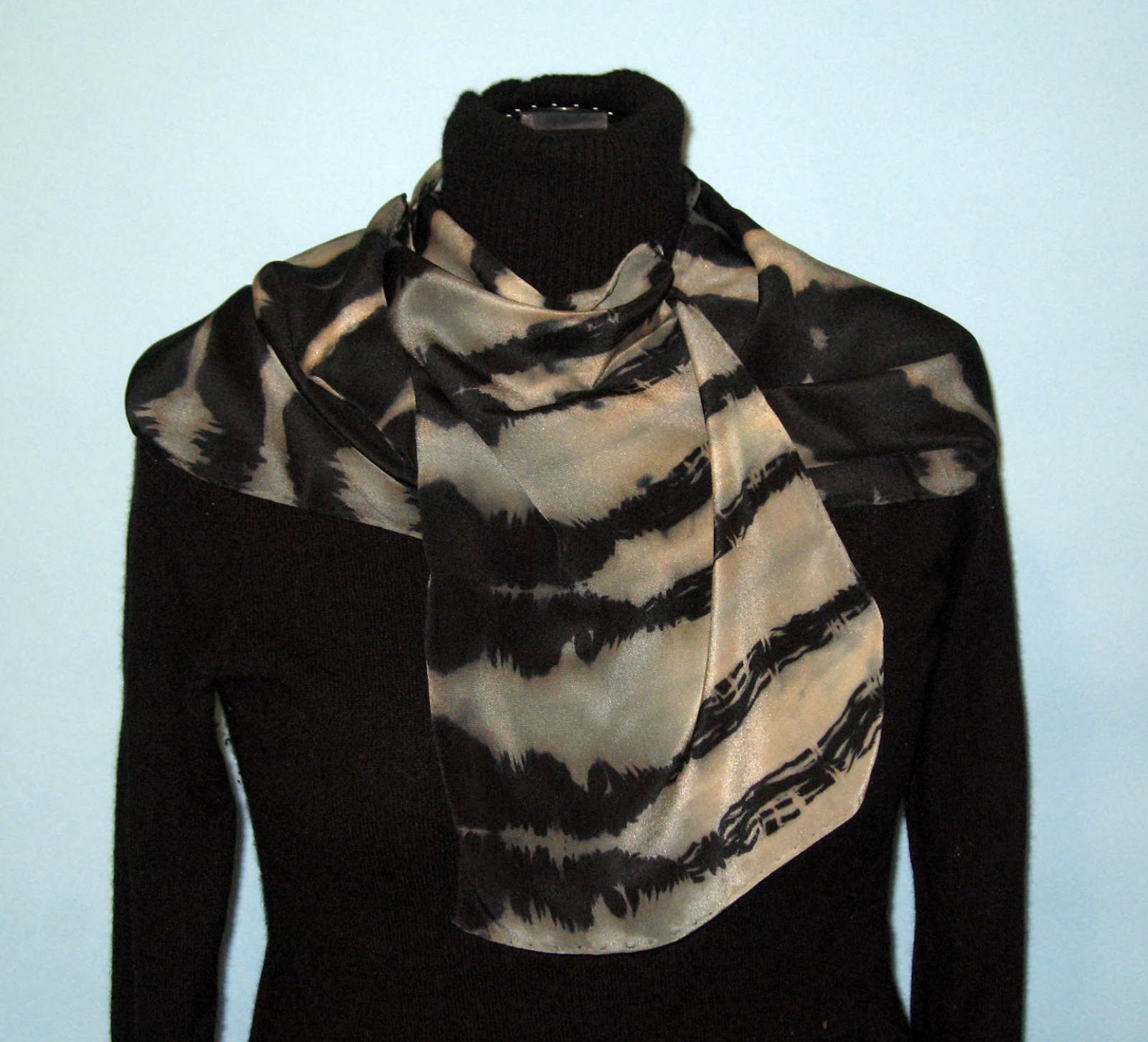My first group of photos have included my discharge silk scarves. Here are a few. The discharge work has all been done on the black scarves bought from dhrama and using their discharge procedure with a bit of Janet's philosophy thrown in. ( If a little works add more.) So here are some shots of my scarves- hope you enjoy.
 |
| Another example of Itajime but after the discharge the scarf was placed in a procion mx dye solution after the discharge to add color.
|
 |
|
|
This example of Itajame did not use clamps but sinew.
The blocks were placed on the fabric and then just wrapped tightly to prevent dye from getting under the block.
This is another method of Shibori called Arashi meaning "Storm" or can be called Bomaki. This technique is made by folding and wrapping your fabric around a pole. The poles can be a broom handle to a pipe of a very wide pipe. This form of Shibori is like all Shibori in that the excitement is when you unroll your piece and see what wonderful designs you have created.
More Arashi Shibori that is made by folding and placing on a wider pole and then wrapping with a resist such as string and pushing it down tightly on the pole. Many of these designs will remind you of animal prints and can add much excitement to a basic black dress.
Tesuji Shibori which means pleated and bound. This scarf was so easy to do. The fabric was folded in half and then accordion pleated length wise. It was then loosely bound and allowed to sit in a bath of discharge. Not very interesting in this piece but this technique can be exciting making vertical and horizontal stripes with numerous dyes to form complex color designs.
More Arashi Shibori that is made by folding and placing on a wider pole and then wrapping with a resist such as string and pushing it down tightly on the pole. Many of these designs will remind you of animal prints and can add much excitement to a basic black dress.
Tesuji Shibori which means pleated and bound. This scarf was so easy to do. The fabric was folded in half and then accordion pleated length wise. It was then loosely bound and allowed to sit in a bath of discharge. Not very interesting in this piece but this technique can be exciting making vertical and horizontal stripes with numerous dyes to form complex color designs.
Well, it is a start. I have a few up on my esty page under JanetSPlatzArts but have not found how to link the two together as of yet. So I will call it a day and post this and find some comfort in doing nothing for a bit.
Thanks
Thanks
Glad you stopped by and drop me a line. I will post more on Shibori with my Rayon Scarves and Tee Shirts shortly.
Waves as she watches you drive by.






















2 comments:
Beautiful scarves!
Beautiful scarves!
Post a Comment